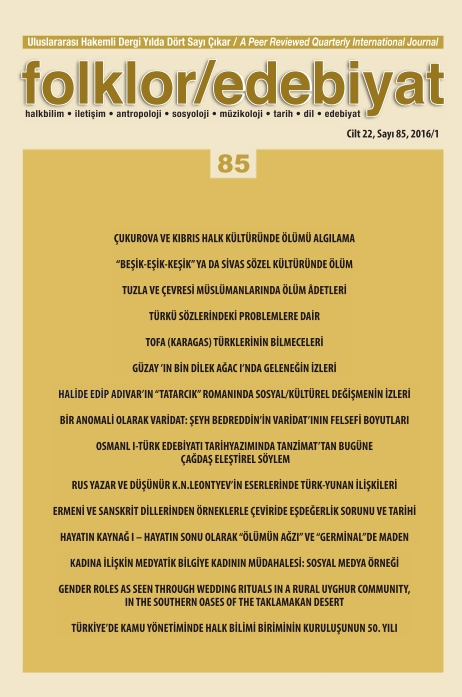Halide Edip Adivar’in “Tatarcik” Romaninda Sosyal/Kültürel Değişmenin İzleri
Traces of Social-Cultural Change in Halide Edip Adıvar’s “Tatarcık” Novel
Author(s): Türkan Fırıncı OrmanSubject(s): Cultural history, Novel, Turkish Literature, Cultural Anthropology / Ethnology
Published by: Uluslararası Kıbrıs Üniversitesi
Keywords: Social-cultural change; Westernization; Halide Edip Adıvar; sociology of literature;
Summary/Abstract: Halide Edip Adıvar, in her Tatarcık novel that she tackles social change and modernization problems, examines alienation as a consequence of Westernization. Tatarcık novel has been serialized in Yedigün journal for the first time in 1939, and then has been published several times. In 1968, the novel was reprinted as a simplified copy. Tatarcık novel, in this study, is analysed in terms of the characteristics of the individual and social change of republic period and is qualitatively evaluated. To this end, firstly the life and works of Halide Edip Adıvar are briefly introduced and secondly the traces of social/cultural change is debated. Blended with the literary style, there are various indicators of social and cultural change which are examined in the novel such as values and the value judgements, manners of life, material and moral acceptances and aspects on all these have changed after the establishment of the republic. In this study, similarly looking at the traces of social/cultural change in the context of modernization/westernization, observations on change dynamics, religious values, education, view on women, European style culture, cultural degeneration themes are debated. It is concluded that novel characters who play a role of carriers of social problems are two folds, whereas one group believe in formal and the other refers to essential modernisation. Furthermore, it is important to note that the social problems narrated in the novel are rooted in the transitional characteristics of the period. Even though Tatarcık character is far from directly representing the women of the era, in this transition period Tatarcık concretizes as a synthesis of East and West. In this context, it could be thought that she represents the ideal of westernization itself.
Journal: Folklor/Edebiyat
- Issue Year: 22/2016
- Issue No: 85
- Page Range: 107-122
- Page Count: 16
- Language: Turkish

